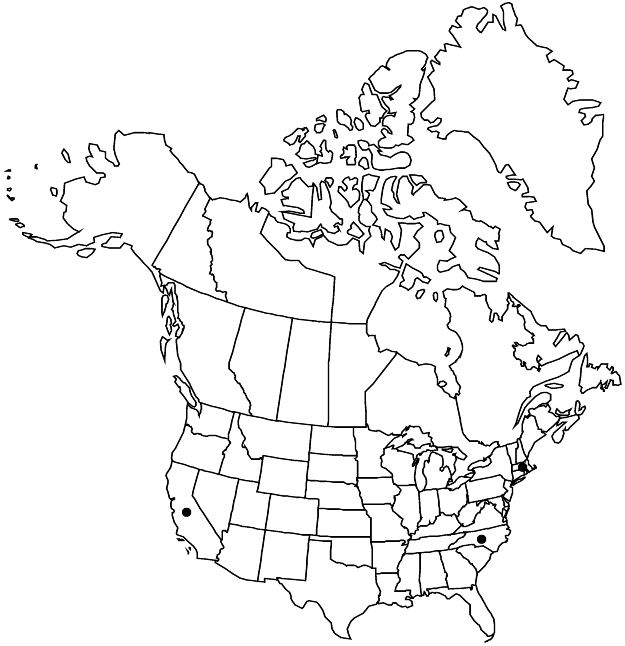Prunus speciosa
Bot. Mag. (Tokyo) 29: 139. 1915.
Trees, not suckering, 60–100 (–250) dm, not thorny. Twigs with terminal end buds, glabrous. Leaves deciduous; petiole 7–45 mm, glabrous, glandular, glands 2–4, discoid; blade elliptic to obovate, 5–17 × 3–8 cm, base obtuse to rounded, margins singly to doubly serrate, teeth aristate, glandular, apex caudate, surfaces glabrous. Inflorescences (2–) 3–5 (–6) -flowered, corymbs; central axes 5–25 (–60) mm. Pedicels 10–40 mm (subtended by leafy bracts), glabrous or sparsely hairy. Flowers blooming at leaf emergence; hypanthium tubular, 4–8 mm, glabrous externally; sepals spreading to reflexed, oblong-ovate to lanceolate, 3–8 mm, margins entire or toothed, eglandular, surfaces glabrous; petals white or pink, suborbiculate to oblong-obovate, 8–18 mm; ovaries glabrous. Drupes black, globose, 10–13 mm, glabrous; mesocarps fleshy; stones ellipsoid, slightly flattened. 2n = 16 (Japan).
Phenology: Flowering Apr–May; fruiting Jun–Jul.
Habitat: Disturbed sites, abandoned plantings
Elevation: 0–200 m
Distribution

Introduced; Calif., Mass., N.C., e Asia (Japan)
Discussion
The name Prunus serrulata has been widely applied to P. speciosa by North American botanists and horticulturalists (for example, P. G. Russell 1934; A. J. Rehder 1940); some Japanese cherry experts now circumscribe P. serrulata more narrowly so that it includes only the white-petaled, double-flowered cultivars closely resembling the nomenclatural type. The single-flowered plants that are found escaping rarely and perhaps naturalizing in the flora area have been called P. lannesiana (Carrière) E. H. Wilson forma albida (Makino) E. H. Wilson or P. speciosa. Based on principal components analysis of 35 morphological characters from 468 individuals of the P. serrulata complex and related taxa, K. S. Chang et al. (2007) argued that forma albida is distinctive and separated from other taxa of the P. serrulata complex. H. Ohba (2001) recognized it at species rank as Cerasus speciosa (Koidzumi) H. Ohba. The classification and nomenclature of Japanese flowering cherries are complex, convoluted, and subject to varying interpretations, and no attempt is made to resolve them here. Centuries of selection and hybridization have blurred species distinctions, and it may be best to do as horticulturalists have and forsake botanical species names in favor of traditional and cultivar names. Whatever the name, these Japanese flowering cherries are widely grown as ornamentals where winters are not too cold nor summers too hot; they escape only rarely and have been found naturalizing only near planted specimens.
Selected References
None.
Lower Taxa
"dm" is not declared as a valid unit of measurement for this property.